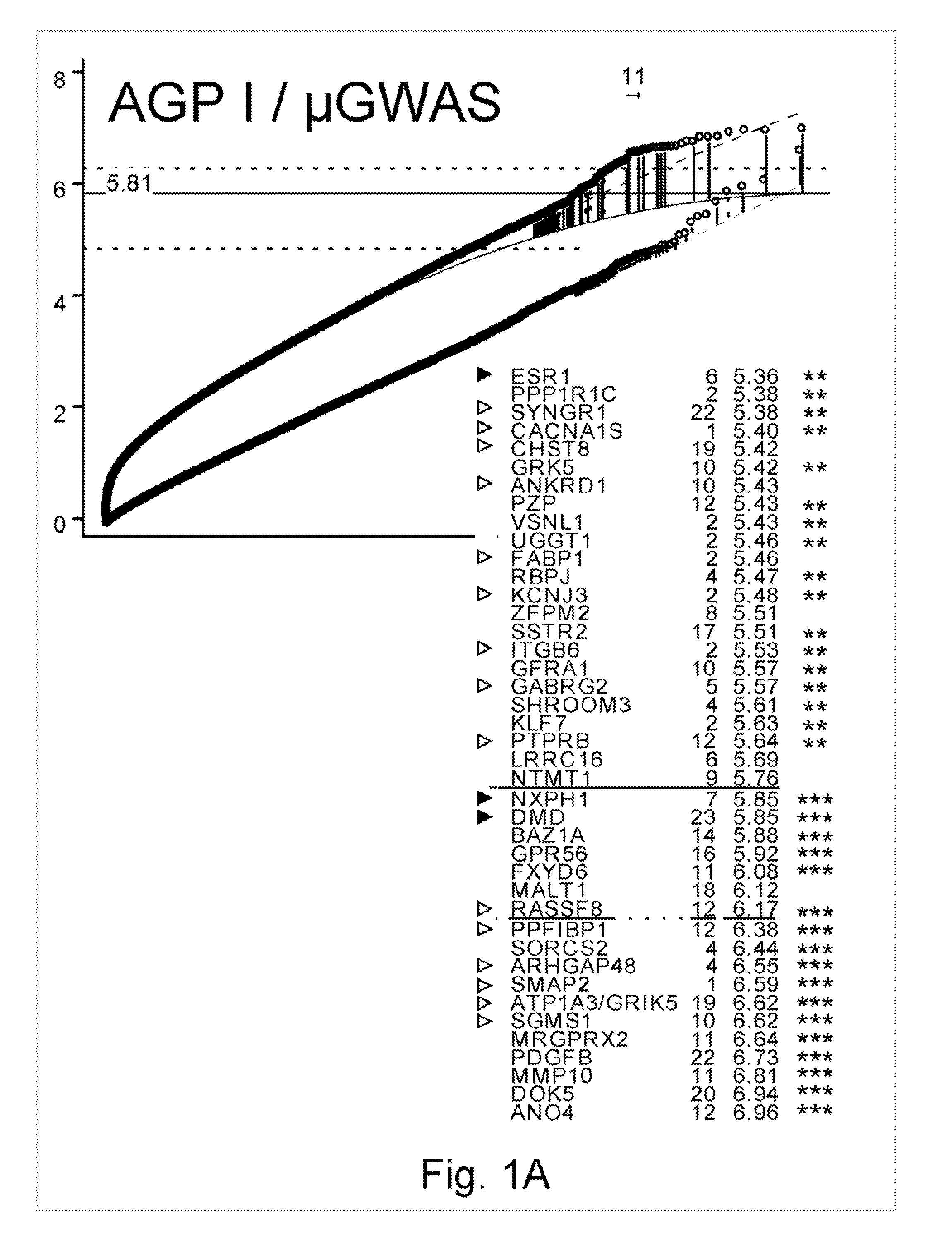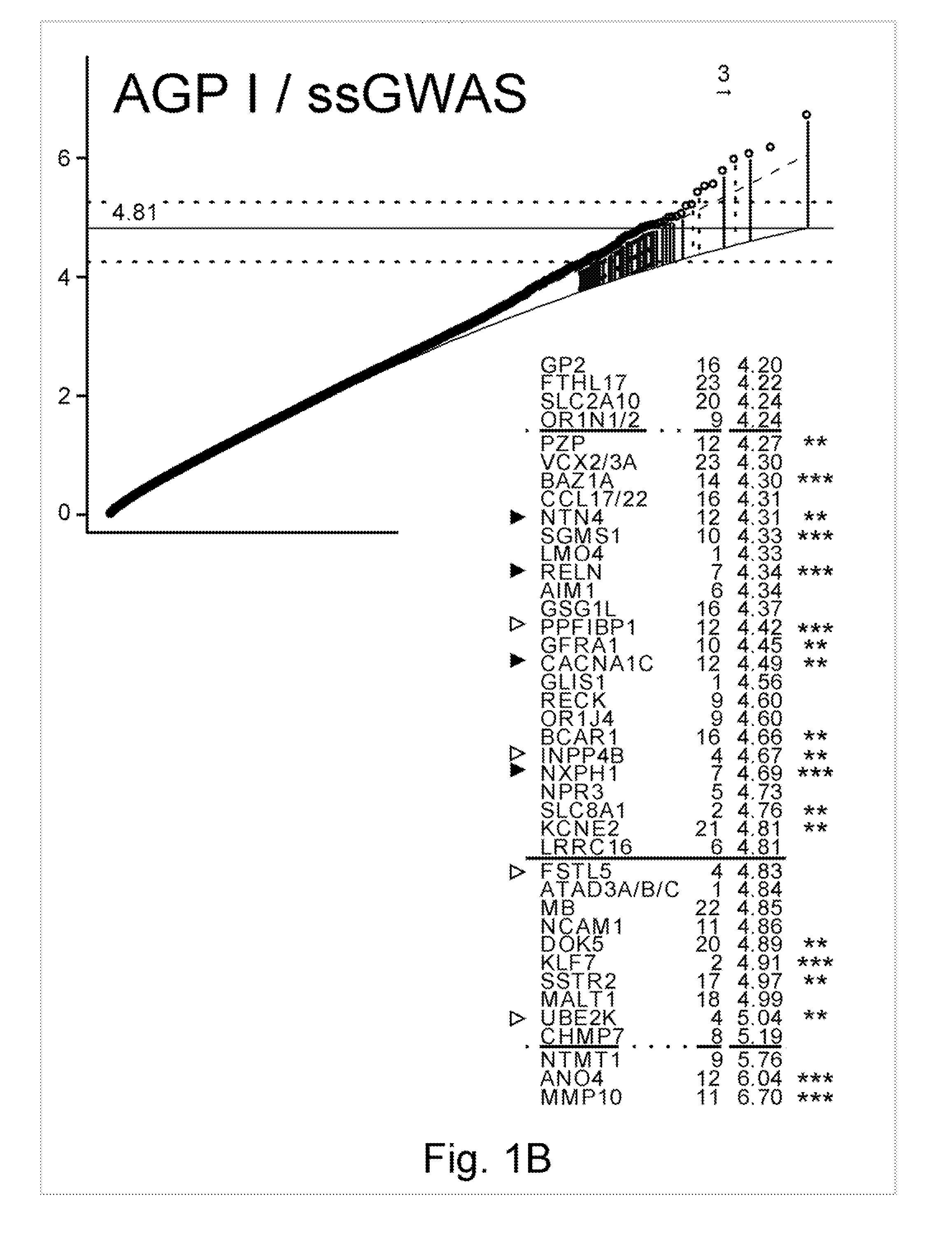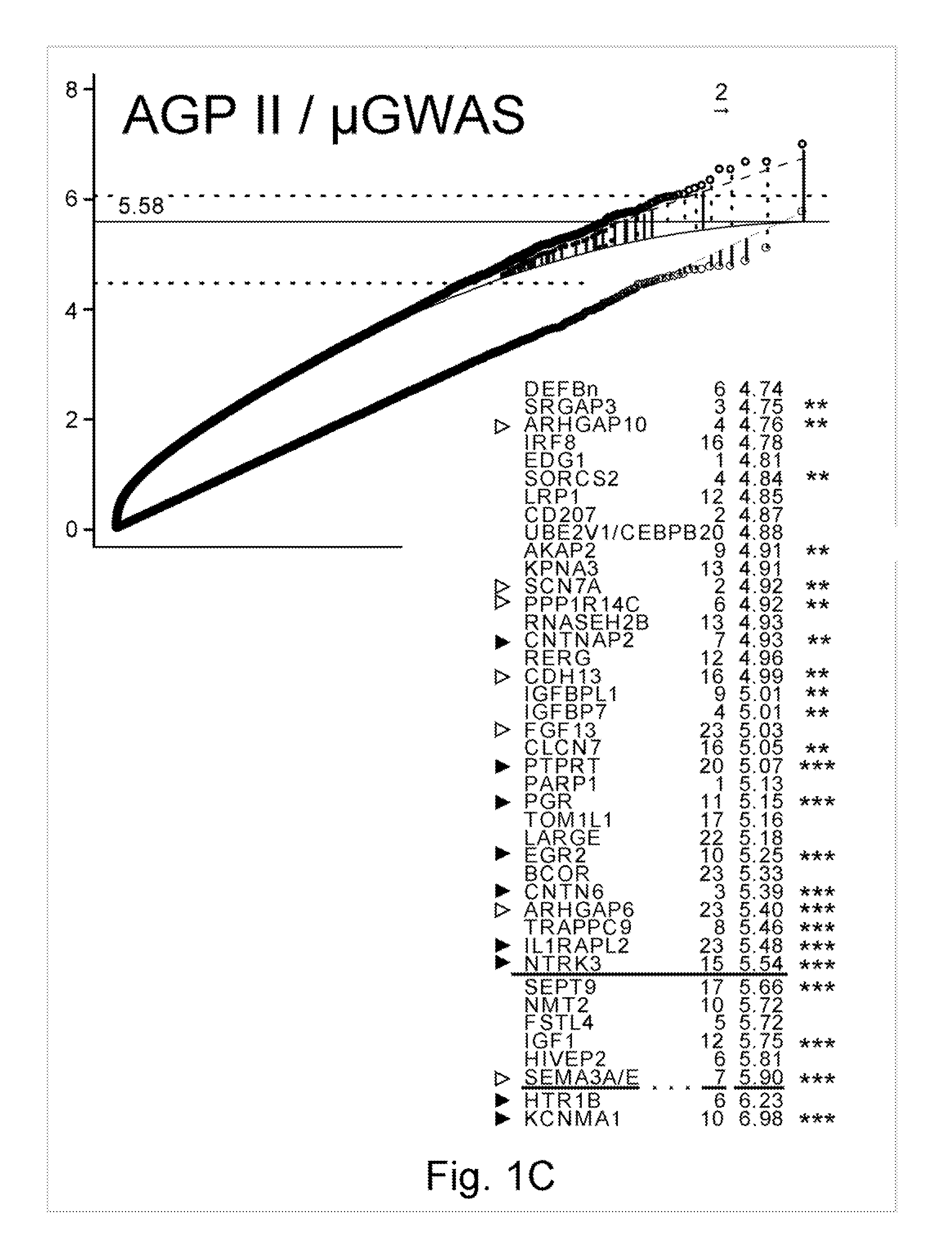Treatment and prevention of autism and autism spectrum disorders
- Summary
- Abstract
- Description
- Claims
- Application Information
AI Technical Summary
Benefits of technology
Problems solved by technology
Method used
Image
Examples
example 1
A Novel Biostatistics Approach Reveals New Therapeutic Strategies for the Treatment of Autism and ASDs
[0124]The findings presented in Example 1 are further described in Wittkowski, K M. et al., A Novel Computational Biostatistics Approach Implies Impaired Dephosphorylation of Growth Factor Receptors as Associated with Severity of Autism, Translational Psychiatry (2014) 4, e354 which is hereby incorporated by reference in its entirety.
[0125]This Example describes use of a novel computational biostatistics approach in a genome-wide association study (GWAS) performed using one of the largest studies of ASD in the US, which included 2705 children with ASD from the Autism Genome Project (AGP). Data from two independent populations (Stages) of the AGP (AGO I and AGP II, available from NIH's dbGaP) was analyzed using u-statistics for genetically structured wide-locus data and additional data from unrelated controls to explore epistasis. To account for systematic, but disease-unrelated diff...
example 2
Treatment and Prevention of ASD in Young Children
[0169]The data presented in Example 1 identified two autism-specific gene clusters along the Ras / Ca2 pathway. One cluster comprises several receptor protein tyrosine phosphatases (PTPRs), whose role is to deactivate growth factors shortly after their activation through growth factor binding. The second cluster, including ANOs (anoctamins) and CLCs (voltage-sensitive chloride channels) shifts the focus from only Ca2+ signaling to a broader spectrum of ions, including CF and K.
[0170]Excessive neuronal growth through impaired control of growth signaling may explain the larger brain and body sizes seen in children with severe forms of autism (Pathan A R, Karwa M, et al. (2010) Inflammopharmacol 18:157-68), and, importantly, may leave neurons overly sensitive to stimulation via the second messenger Ca2+. The suggested role of PTPR variations in protracted growth factor (GF) signaling suggests that pharmaceutical interventions targeting exc...
example 3
Use of Mefenamic Acid in Autism Spectrum Disorders
[0174]Age for intervention: The window of opportunity for reducing the incidence of severe forms of autism may commence in very early stages of childhood development. The involvement of PTPRs suggests that treatment may be more effective if performed during the time of active neural development. For example, treatment may be more effective if completed before around 24 months, when some studies suggest that synaptogenesis in language-related areas ceases (Tau G Z, Peterson B S (2010) Neuropsychopharmacology 35:147-68.
[0175]With early treatment using the methods and compositions of the present invention regression may be averted, allowing other treatments targeting specific sub-phenotypes to be employed, later, if desired. For example, including bumetanide (Lemonnier E, Degrez C, et al. (2012) Transl Psychiatry 2:e202) and oxytocin (Preti A, Melis M, et al. (2014) J Child Adolesc Psychopharmacol 24:54-68) or, potentially, memantine. S...
PUM
| Property | Measurement | Unit |
|---|---|---|
| Time | aaaaa | aaaaa |
| Current | aaaaa | aaaaa |
| Digital information | aaaaa | aaaaa |
Abstract
Description
Claims
Application Information
 Login to View More
Login to View More - R&D
- Intellectual Property
- Life Sciences
- Materials
- Tech Scout
- Unparalleled Data Quality
- Higher Quality Content
- 60% Fewer Hallucinations
Browse by: Latest US Patents, China's latest patents, Technical Efficacy Thesaurus, Application Domain, Technology Topic, Popular Technical Reports.
© 2025 PatSnap. All rights reserved.Legal|Privacy policy|Modern Slavery Act Transparency Statement|Sitemap|About US| Contact US: help@patsnap.com



